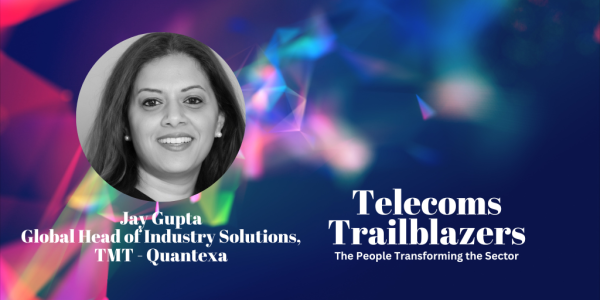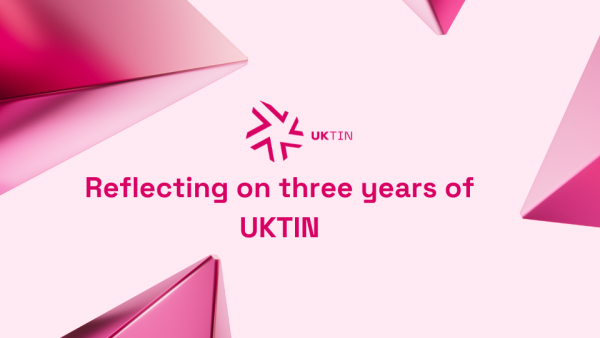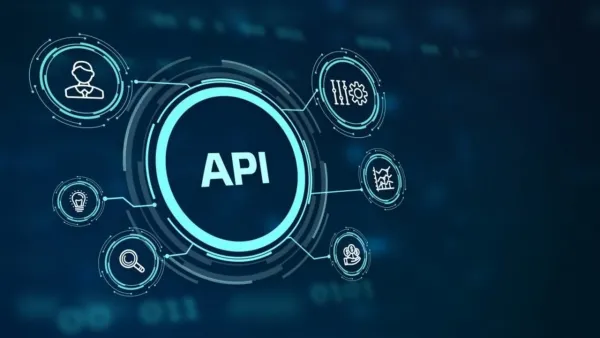For UKTIN’s AI-themed month, we spoke to Poonam Parihar, the founder of bandarlog.dev and Arnaud Polster, a Chief Sales Officer at Accelleran about the role of AI in their businesses

- Please tell us about your business.
Parihar: We are harnessing the power of AI, machine learning and automation to orchestrate and manage network services and applications for both wired and wireless networks. We are committed to innovation that can transform the digital network infrastructure and drive connectivity, efficiency and growth.
AI - together with network automation - has the potential to make the network “faster, smarter, simpler”, building a digital infrastructure that is resilient, sustainable and seamless across different industries.
Polster: Accelleran was founded in 2013 and is based in Antwerp, Belgium. We now are well known in the industry for bringing intelligence to the RAN, with our RAN Intelligent Controller (RIC) and associated xApps/rApps being at the forefront of that. We were invited to and happy to attend the UKTIN event “Unleashing the Power of AI in Telecoms” as it gave us an excellent opportunity to discuss our latest applications, including Network Optimisation and Energy efficiency with like-minded players in this industry.
- There is a lot of buzz around AI at the moment. Why?
Parihar: We have been working on AI technology advancements for a few years now. The launch of AI systems such as Chat-GPT has largely impacted and created a financial boost in the AI industry and this has led to more companies looking for AI as a means to building smarter solutions for their customers. The growth in the consumer economy and the introduction of the Metaverse and Web 3 are additional factors. We also know our current infrastructure isn’t capable of handling future applications and services, so we need to integrate AI with other emerging technologies such as digital twins, edge computing and 5G to foster innovation and increase business efficiency and productivity in our workspace.
Polster: Most of the buzz we see on social media is about generative AI, as this is accessible and can be utilised by individuals for their personal use. However, people underestimate the speed at which AI tools are being utilised. A recently published report by O-Reilly Data highlighted how 50% of companies have implemented AI in some capacity, with most of them looking to utilise it for revenue growth and cost reduction. Telecommunications operators are going to be no exception to this. 5G deployment is costly, and operators will be looking for any method to both enhance the customer experience and keep costs low – all while keeping the performance of the network high. The current buzz may be considered by some to be hype, but that is unfounded; it’s set to have a transformative impact across industries, with use cases ranging from predictive maintenance to network security. Telecoms won’t be an exception. The ability for AI to analyse vast amounts of data in real-time is going to allow telecom operators to enhance operational efficiency, improve service quality and deliver personalised customer experiences.
- Where are the big opportunities for AI? And for your business?
Parihar: We are at the very early stage of the AI revolution. We use AI for assisting and increasing productivity, but there are tremendous opportunities in many areas on how AI methods can be used in the decision-making process, as well as insights into the digital network infrastructure transformation. My start-up is one example of this. We are seeing augmentation cases too. Of course, the health and financial sectors will also benefit greatly from the intelligence of AI.
Polster: For Accelleran, AI is opening a lot of possibilities, especially for xApps and rApps - developed on our SDK by ourselves and third parties - that leverage AI and machine learning to optimise and automate the RAN. These applications are pivotal in optimising and automating the RAN for both Public and Private 5G Networks. AI will also assist in simplifying the complexities associated with deploying and managing a Private 5G Network, ensuring these networks are as straightforward to implement as they are powerful. We have a rich and ever-growing ecosystem of developers to innovate these xApps/rApps. AI-driven applications have the potential to give the operators what they are looking for, maintaining high QoS amidst ever-increasing network and energy demands. We already mentioned our energy-saving xApp as an example of this. More than 50% of the energy in a mobile network is consumed by the RAN, and the trials of our energy management xApp have seen energy savings of 15-60% depending on the complexity of the network, with Quality of service maintained.
- What are your predictions for the year ahead?
Parihar: I see AI being at the centre of every discussion. The technology is a priority now. I hope we start to focus on closed sources vs open-source models and building AI models that are multi-dimensional. I am sure we’ll continue to be talking about standards, risk and safety, and accountability around AI. There is still a lot of in-house technology development and investment needed to build a blueprint for the intelligent infrastructure, so I would like to see some strategic investment in this space, but mostly, I predict that AI will be enterprise-focused and tackle operational challenges.
Polster: The continued rollout of 5G networks will continue to go hand in hand with the adoption of AI-driven solutions. We’ll start to see AI-native applications become the standard, not the exception.
- What is the one thing you’d like people to know about your work?
Parihar: At bandarlog.dev, we believe that sustainability is an innovation frontier. As we work with our community and customers to create future technology services and solutions, we are committed to prioritising sustainability. Everyone must consider the impact of technology on the environment. Integrating eco-friendly practices has been crucial to our design process. Hence, implementing our automation systems can help to create a more sustainable sector, resulting in better products and solutions.
Polster: Our RAN Intelligent Controller first came out in 2019, and we are no longer just talking about future concepts and hypothetical ideas. We have already developed a rich ecosystem of x/rApp developers, and are always looking for new partnerships and projects to continue to find ways to support network operators to achieve real transformation of their network and bring intelligence to the RAN. We’ll be attending both Mobile World Congress in Barcelona to showcase more of our work, but we also have been selected to present at the RIC Forum in Dallas in March. This is an event organised by the National Telecommunications and Information Administration, and we’ll be featuring a live video stream directly from the site where our xApp is deployed, offering a real-time glimpse into our solution.









